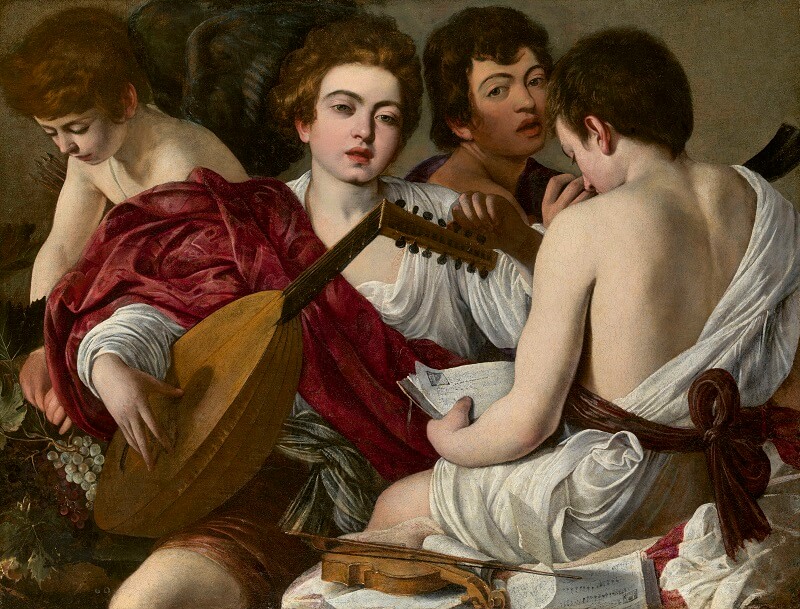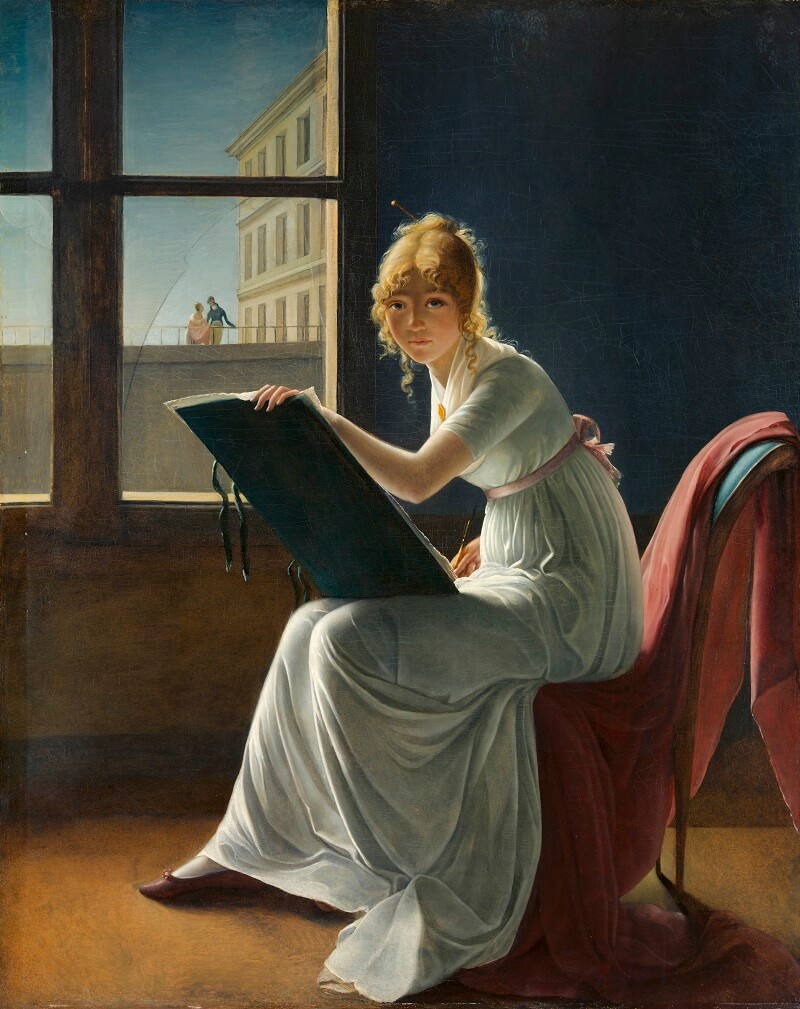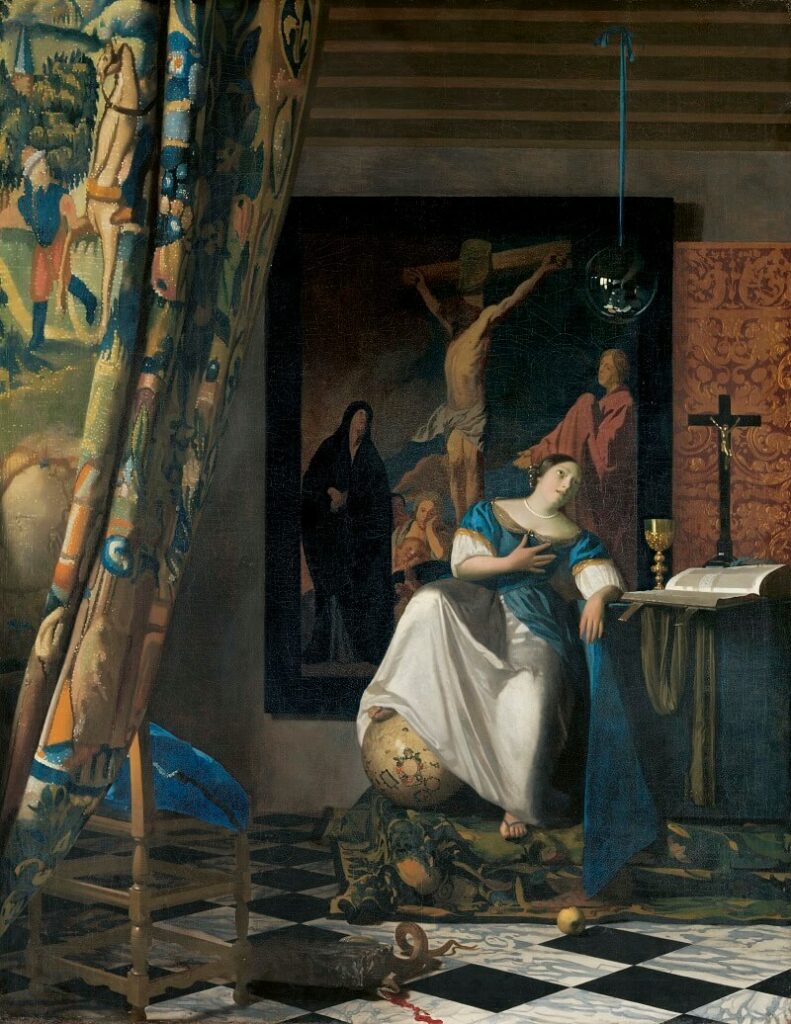Caravaggio, Titian, Rembrandt, Vermeer, Cézanne and Monet are just a handful of the European master painters whose centuries old works are on display in ‘European Masters from The Metropolitan Museum of Art, New York’ at Queensland Art Gallery | Gallery of Modern Art (QAGOMA) in Brisbane until 17 October.

The ‘European Masterpieces’ exhibition features 65 historical artworks, which highlight some of the most significant changes in society, religion and culture across centuries. Beginning around the 15th century, the works, which have been drawn from The Metropolitan Museum of Art’s rich collection of paintings, showcases some of the greatest painters of all time and importantly includes work by two women painters; Marie-Denise Villers’ (1774-1821) portrait of a young woman drawing titled Marie Joséphine Charlotte du Val d’Ognes (1801), and Elizabeth Louise Vigee Le Brun’s (1755-1842) exquisite portrait of Comtesse de Chartre (1789).
Adding to the visual and atmospheric romance of the ‘European Masterpieces’ exhibition are the specially designed spaces which reflect on the decorative and also purposeful device of the ‘arch’ or curved lintels that so beautifully embellish ancient European architecture, making for an entirely immersive exhibition experience. The remarkable collection of paintings are arranged in spectacular design to narrate three telling themes: ‘Devotion and Renaissance’, ‘Absolutism and Enlightenment’ and ‘Revolution and Art for the People’.
‘Over three chapters, ‘European Masterpieces’ traces the development of art and artists from a time when creativity was closely controlled through the patronage of church and state, to a period in which our contemporary idea of the independent artist was born,’ says Queensland Art Gallery | Gallery of Modern Art (QAGOMA) Director Chris Saines.

To name just a few of the precious and highly valuable works on display, a walk through the ‘Devotion and Renaissance’ chapter brings 15th Century Italy to audiences with Giovanni di Paolo’s Paradise (1445), a heavenly garden of flowers where angels and saints mingle illuminated in a vibrant tapestry of colour; one of Fra Angelico’s early works The Crucifixion (c.1420-23), a dramatic scene painted in tempera and gold portraying Christ on the cross; and Titian’s emotive painting of Venus and Adonis (1550s) showing Venus reaching out to embrace her lover one last time before he leaves to go hunting and meets his tragic end.
The grandeur of the Italian Baroque, Dutch Golden Age, French Rococo and Neoclassical movements come to life in ‘Absolutism and Enlightenment’. In this space, Caravaggio’s The Musicians (1597) an allegory of music and love sits alongside Rembrandt’s vision of the Roman goddess of spring Flora (c.1654) depicted through a likeness of his wife Saskia, as well as Vermeer’s elaborate Allegory of the Catholic Faith (c.1670-72), and Peter Paul Rubens’s monumental Holy Family with Saints Francis and Anne and the Infant Saint John the Baptist (c. early-mid 1630s), among others.
The display in ‘Revolution and Art for the People’ interprets the changing tides of the 1800s when a Modern era of artistic freedom and creative independence came into play such as we see in; Joseph Mallord William Turner’s Venice, from the Porch of Madonna della Salute (c.1835), a light-filled scene merging the gondola inhabited waters of a Venetian canal with the built landscape and a cloud swept sky; Cézanne’s Post-Impressionist painting Still Life with Apples and Pears (c.1891–92) illustrating the simple pleasures of the everyday; van Gogh’s springtime evocation The Flowering Orchard (1888); and Monet’s verging on abstract Water Lilies (1916–19) inspired by the artist’s obsession with his garden in Giverny, France.

Tune in to QAGOMA’s YouTube channel to hear fascinating exhibition insights from QAGOMA’s Director Chris Saines in conversation with writer, teacher and ABC Classic broadcaster Ed Ayres. With passion and vigour Saines discusses the four-year development of the ‘European Masterpieces’ project and explains the meticulous care and handling of the works that is necessary to safely bring (and return) the treasured artworks across international borders, and also presents his pick of three paintings from the exhibition: Titian’s Venus and Adonis, Marie-Denise Villers’ Marie Joséphine Charlotte du Val d’Ognes, and van Gogh’s The Flowering Orchard.
In a second sitting, Saines joins Geraldine Kirrihi Barlow, Curatorial Manager, International Art QAGOMA, to present an illustrated curator talk outlining the key themes and discusses more works in the exhibition. Check it out here.
The ‘European Masters’ public program includes daily performances from musicians and models in costume, the opportunity to engage in interactive artmaking activities, as well as a film program, and a do-it-yourself exhibition tour guided by a smartphone app (headphones not provided). Visit QAGOMA’s website for more information and ticketing.